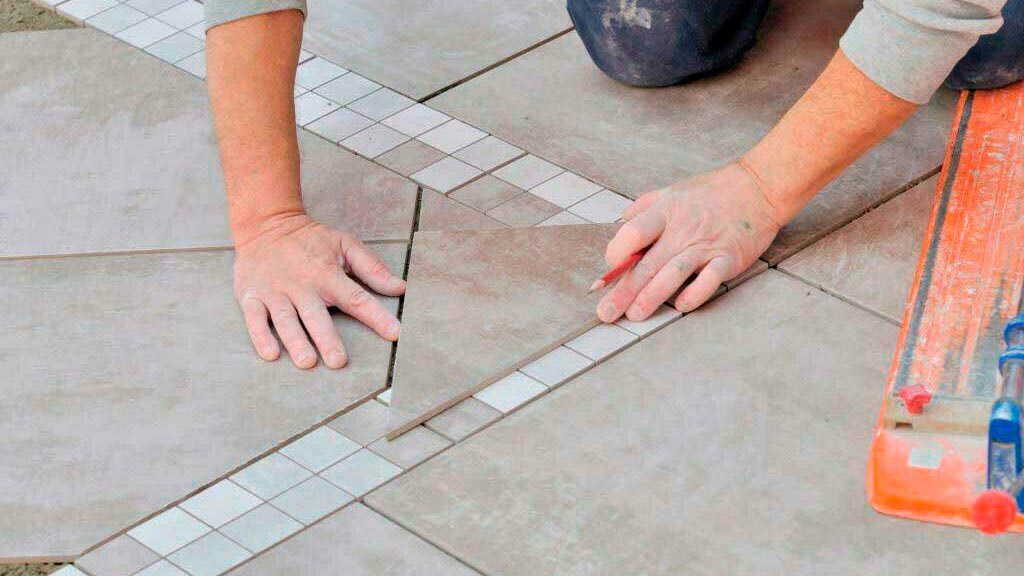To use a wet tile saw, fill the reservoir with water, place the tile on the cutting surface, align the tile with the guide, and slowly push it into the blade to make the desired cut. Additionally, ensure that you wear appropriate safety gear, such as goggles and gloves, to protect yourself during the cutting process.
Using a wet tile saw can greatly simplify the process of cutting tiles for various projects. Whether you’re renovating your bathroom or installing a new backsplash in your kitchen, a wet tile saw allows for precise and accurate cuts. This tool utilizes a diamond-encrusted blade and water to create smooth and clean cuts on various types of tile materials.
However, it is crucial to understand how to properly use a wet tile saw to ensure efficient and safe cutting. We will discuss the step-by-step process of using a wet tile saw and provide valuable tips to make your tile-cutting experience successful.
Types Of Wet Tile Saws
Wet tile saws come in different types, each with its own unique features. These types include handheld wet tile saws, tabletop wet tile saws, and overhead wet tile saws. Handheld wet tile saws are portable and perfect for small projects.
Tabletop wet tile saws are stationary and provide more stability for larger tiles. Overhead wet tile saws are designed for precision and accuracy, making them ideal for professional use. Each type of wet tile saw has its own benefits and capabilities.
Handheld saws are more maneuverable, tabletop saws offer stability, and overhead saws provide precise cuts. Understanding the different types and their features will help you choose the right wet tile saw for your specific project.
Working Principle Of Wet Tile Saws
A wet tile saw operates based on a simple yet effective principle. It utilizes a diamond-encrusted blade to cut through tiles with precision. The saw is equipped with a water reservoir that continuously sprays water onto the blade as it spins, keeping it cool and reducing friction.
This water also helps to flush away debris and prevent any potential damage to the tile. The tile is placed on the cutting surface and carefully guided towards the rotating blade, allowing for a clean and accurate cut. Some wet tile saws also come with additional features such as adjustable guides and beveling capabilities for more complex cuts.
By understanding how a wet tile saw operates, you can confidently use it to achieve professional-looking results for your tile installation projects.
Bevel Cutting With A Wet Tile Saw
To achieve bevel cuts with a wet tile saw, follow these step-by-step instructions. First, ensure the tile saw is set up correctly and the water reservoir is filled. Next, adjust the cutting angle on the machine according to your desired bevel angle.
Place the tile on the saw’s cutting surface and securely hold it in place. Slowly guide the tile towards the rotating blade, ensuring a smooth and controlled motion. Continue cutting until the bevel cut is complete. Remember to always prioritize safety by wearing protective gear and adhering to the manufacturer’s guidelines.
With these instructions, you’ll be able to effectively use a wet tile saw for precise bevel cuts.

Credit: www.rubi.com
Key Features Of Wet Tile Saws
Wet tile saws have key features that are important to understand. These features include various components and functions that make the saw effective in cutting tiles. By exploring these components and functions, you can learn how to use a wet tile saw efficiently.
It is crucial to familiarize yourself with the cutting surface, the diamond-encrusted blade, and the process of filling the reservoir. Additionally, understanding how to use the jig and the technique for making different types of cuts is essential. Whether you need to do a straight cut, a bevel cut, or cut at an angle, a wet tile saw can help you achieve precise results.
Remember to follow safety precautions and always wear protective gear when using a wet tile saw.
Cutting Tiles At An Angle
When cutting tiles with angled edges using a wet tile saw, there are a few techniques to keep in mind. First, ensure that you have a sharp diamond-encrusted blade for precise cuts. Next, adjust the saw’s bevel setting to the desired angle for angled cuts.
Make sure to properly secure the tile in place using the saw’s jig or other clamping mechanisms. Slowly guide the tile through the saw, applying steady pressure to maintain control. Always prioritize safety by wearing protective goggles and gloves. Remember to take your time and make small, controlled movements to achieve clean and accurate angled cuts.
Practice on scrap tiles before working on your actual project to develop your skills and confidence with the wet tile saw.
Straight Cut Techniques
When using a wet tile saw, it’s important to master the technique for straight cuts. To achieve precise straight cuts, follow these tips. First, ensure the tile is securely positioned on the saw’s cutting surface. Use slow and steady movements while guiding the tile through the blade.
Maintain a firm grip on the tile, but avoid applying excessive pressure. Let the saw do the work. It’s crucial to keep the saw blade aligned with the marked cutting line. Take your time and double-check the alignment before making the cut.
Finally, always wear eye protection and follow safety guidelines when operating the wet tile saw. By following these techniques, you can create clean and accurate straight cuts with your wet tile saw.
Executing The Cut
Using a wet tile saw requires careful execution. Here is a step-by-step process for cutting tiles. Start by setting up the wet tile saw according to the manufacturer’s instructions. Measure and mark the tile where you want to make the cut.
Place the tile on the saw’s cutting surface, ensuring it is secure. Turn on the saw and slowly push the tile towards the blade, keeping your hands away from the blade. Move the tile steadily through the blade, maintaining a steady pace.
Once the cut is complete, turn off the saw and remove the tile. Ensure the cut is clean and smooth before moving on to the next tile. Repeat the process for each tile you need to cut. Remember to always wear safety goggles and gloves when operating the wet tile saw.
Proper execution is key to achieving precise and accurate cuts.
Cutting Glass Mosaic Tiles
Cutting glass mosaic tiles requires special considerations to ensure a clean and precise result. Firstly, it’s important to choose the right wet tile saw with a diamond-encrusted blade for cutting glass. Fill the reservoir with water to keep the blade cool and lubricated throughout the cutting process.
When cutting, use a jig to hold the tile securely in place. Make slow and steady cuts, allowing the blade to do the work without applying too much pressure. Take extra care when cutting intricate shapes or curves, as glass mosaic tiles are fragile and can easily chip or break.
By following these guidelines, you can achieve professional-looking cuts with a wet tile saw when working with glass mosaic tiles.
Tips And Tricks For Using A Wet Tile Saw
When using a wet tile saw, there are some tips and tricks that can help maximize efficiency and accuracy. First and foremost, always ensure that you have the necessary safety gear, such as goggles and gloves, to protect yourself from any potential injuries.
Secondly, make sure to choose the right type of blade for your specific tile material. This will ensure clean and precise cuts. Additionally, it’s important to properly set up and adjust the saw before starting any cutting. This includes adjusting the water flow to keep the blade cool and lubricated.
When cutting, take your time and move the tile slowly, allowing the blade to do the work. Finally, regularly clean and maintain your wet tile saw to ensure its longevity and optimal performance. By following these expert tips, you can confidently use a wet tile saw to achieve professional-looking results.
Troubleshooting And Maintenance
Using a wet tile saw can be a bit challenging at times, but troubleshooting common issues and performing regular maintenance can make the process smoother. One common issue is the blade not cutting properly, which can be solved by ensuring the blade is sharp and not clogged with debris.
Another issue is water leakage, which can be fixed by checking the water reservoir and making sure it is properly sealed. Regular maintenance includes cleaning the saw after each use, checking the water pump for any clogs, and inspecting the blade for any signs of wear and tear.
By addressing these common issues and maintaining your wet tile saw properly, you can ensure its optimal performance and longevity.
Frequently Asked Questions Of How To Use A Wet Tile Saw?
How Do You Cut Tile With A Wet Saw?
To cut tiles with a wet saw, follow these steps: 1. Connect your wet saw to a water source. 2. Adjust the blade height and angle according to your cutting needs. 3. Turn on the water flow to ensure constant lubrication and cooling of the blade.
4. Hold the tile securely and slowly guide it towards the blade, applying gentle pressure. 5. Let the saw do the work and avoid forcing the tile. 6. Continue cutting until you achieve the desired shape or size. 7. Turn off the saw and allow the water to drain before removing the tile.
Remember to take safety precautions and wear protective gear while using a wet saw.
Do You Have To Use Water With A Wet Tile Saw?
O keep it cool and lubricated while cutting the tile.
Is It Better To Wet Cut Or Dry Cut Tiles?
It is better to wet cut tiles. Water helps to cool the blade and reduce dust while cutting.
Conclusion
To achieve precise and smooth cuts when using a wet tile saw, following the correct techniques and guidelines is crucial. By understanding the basics of a wet tile saw, such as how it works and its features, you can ensure efficient and accurate tile cutting.
Remember to fill the reservoir and use a diamond-encrusted blade for the best results. Take advantage of the cutting surface and explore different types of cuts, including straight cuts, bevel cuts, and cutting tile at an angle. Additionally, consider using a jig for more intricate cuts.
Learning how to cut glass mosaic tiles and practicing advanced cuts will enhance your tile cutting skills. Always prioritize safety measures and remember to wear protective gear. With dedication and practice, you will become proficient in using a wet tile saw and achieve professional-looking tile installations in no time.



















